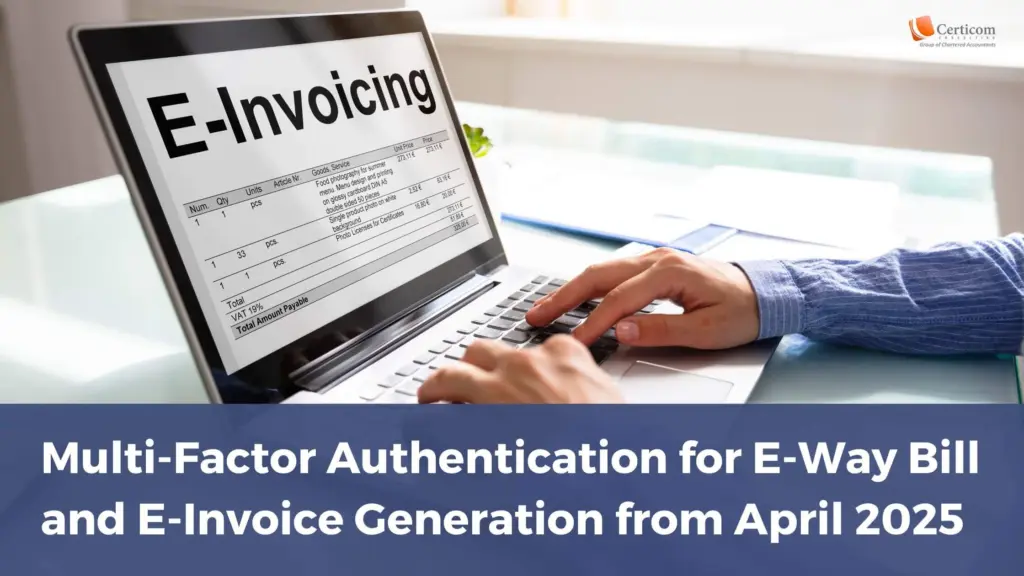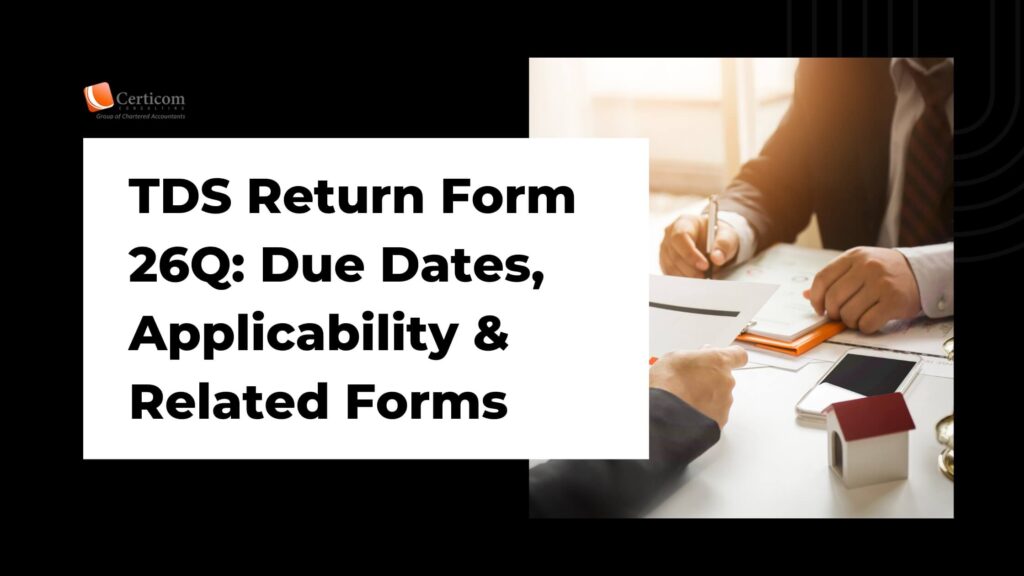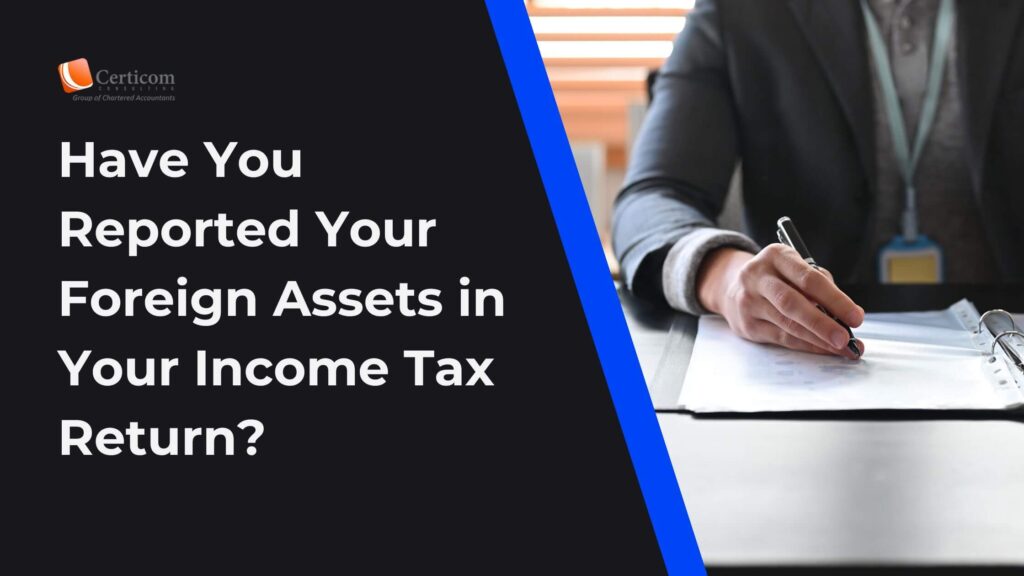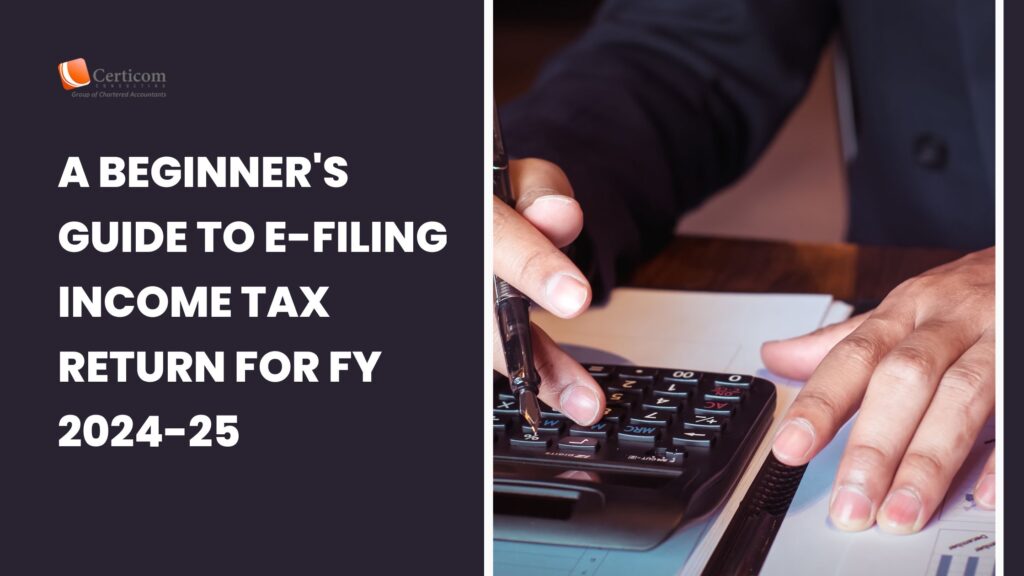Mandatory Multi-Factor Authentication for E-Way Bill and E-Invoice Generation from April 2025

Starting April 1, 2025, the use of Multi-Factor Authentication (MFA) will become mandatory for all GST-registered taxpayers accessing the updated E-Way Bill and E-Invoice systems. This initiative, as announced in an advisory on the GST portal, aims to bolster security and enhance compliance measures. Alongside MFA, new restrictions on E-Way Bill generation and extension are set to improve transparency and accountability in the movement of goods.
Implementation Timeline for MFA
The rollout of MFA for E-Way Bill and E-Invoice systems will follow a phased approach:
From January 1, 2025: Mandatory for taxpayers with an Aggregate Annual Turnover (Implementation Timeline for MFA
AATO) exceeding ₹20 crore.
From February 1, 2025: Mandatory for taxpayers with an AATO exceeding ₹5 crore.
From April 1, 2025: Mandatory for all remaining taxpayers and users.
Notably, MFA has been mandatory for taxpayers with an AATO exceeding ₹100 crore since August 20, 2023, and optional for taxpayers with an AATO exceeding ₹20 crore since September 11, 2023.

Updated Systems for Enhanced Security
The updated versions of the E-Way Bill and E-Invoice systems, developed by the National Information Centre (NIC), will be operational starting January 1, 2025. These enhancements are designed to align with government security protocols and best practices, ensuring the integrity of the portals.
E-Way Bill: New Restrictions on Generation and Extension
The advisory outlines significant changes to the E-Way Bill system:
Restriction on Document Dates:
Effective January 1, 2025, E-Way Bill generation will be limited to documents dated within 180 days of the generation date.
For instance, documents dated earlier than July 5, 2024, will no longer be eligible for E-Way Bill generation after January 1, 2025.
Capped Extensions:
Extensions of E-Way Bills will be capped at 360 days from the original generation date.
For example, an E-Way Bill generated on January 1, 2025, can only be extended until December 25, 2025.
These measures aim to address the misuse of backdating and forward-dating transactions, often exploited for tax evasion, inventory misrepresentation, and delayed GST payments.
Understanding E-Way Bills and E-Invoices
An E-Way Bill is a mandatory document for transporting goods worth over ₹50,000, generated through the GST Common Portal. It must be carried by the person in charge of the conveyance during the goods’ transit.
Similarly, under Rule 48(4) of the CGST Rules, certain taxpayers are required to prepare invoices by uploading specified details (in FORM GST INV-01) to the Invoice Registration Portal (IRP). After obtaining an Invoice Reference Number (IRN), the document becomes an ‘e-invoice’ and includes a QR Code. Notably:
An invoice not registered on the IRP is invalid.
Input Tax Credit (ITC) cannot be claimed for unregistered invoices, and applicable penalties may apply.
E-Invoicing has been mandatory for taxpayers with an AATO of ₹5 crore or more since August 1, 2023.

Key Takeaways for Taxpayers
Taxpayers must adapt to these changes to ensure compliance:
Familiarize with MFA requirements and ensure timely implementation.
Adjust internal processes to align with restrictions on E-Way Bill generation and extension timelines.
Verify the validity of invoices to avoid penalties and ensure ITC eligibility.
These updates represent a critical step towards enhancing compliance, security, and transparency in India’s GST framework. By curbing malpractices and ensuring timely tax payments, these measures will contribute to a more robust and accountable tax system.
Related Post
Have You Reported Your Foreign Assets in Your Income Tax Return?
A Beginner’s Guide to E-Filing Income Tax Return for FY 2024-25
Book A One To One Consultation Now For FREE
How can we help? *




